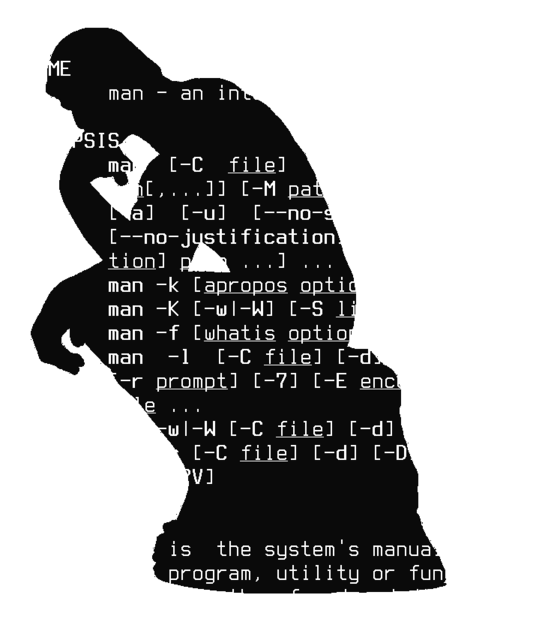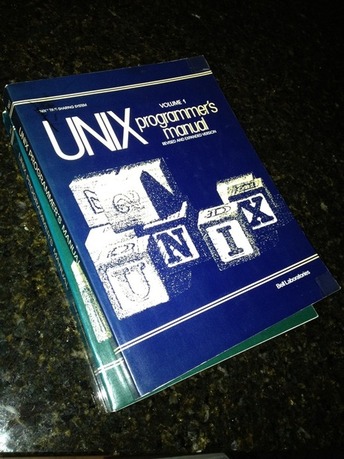A History of $ man
Presented by Elijah Caine
What is $ man?
Who made $ man?
Why do we use $ man?
Alternatives.
Presented by Elijah Caine
What is $ man?
Who made $ man?
Why do we use $ man?
Alternatives.

A man page is a form of online software documentation found on unix and unix-like computer operating systems.
Topic include programs, libraries, system calls, formal standards, and abstract concepts.
man is the system's manual pager. Each page argument given to man is normally the name of a program, utility or function.
They are usually very dry.
There are generally 8 classes of man pages
$ man 3 printf will bring up the printf library manpage, $ man printf will bring up the printf program manpage.
Most systems have different, modified, or additional sections.
Jerome H. Saltzer wrote the RUNOFF utility into the MAD Computer Language for MIT's IBM 7094 CTSS Operating System. RUNOFF was used for computer text formatting.
RUNOFF was later ported to many systems as roff, runoff, rf, compose, nroff, troff, ditroff.
groff was the GNU port of troff and was also the first Open Source implementation of a RUNOFF derivative.
Dennis Ritchie and Ken Tompson at Bell Labs November 3, 1971 published the Unix Programmer's Manual with the first version of UNIX.

Doug Mcllroy (Dennis and Ken's Manager) insisted they include documentation for Unix.
To this day every (well made) *nix program comes with a man page.
Sources include:
https://en.wikipedia.org/wiki/Man_page
$ man man
https://web.archive.org/web/20140327174307/http://manpages.bsd.lv/history.html (because manpages.bsd.lv is broken for some reason)